Multimedia Content
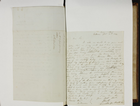
Copy of letter from Post Office to Henry Kemp, 20 April 1844, courtesy of Public Record Office Victoria, Victorian Archives Centre.
Details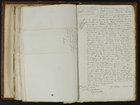
Copy of statement submitted to Magistrate's Court, 5 February 1844, courtesy of Public Record Office Victoria, Victorian Archives Centre.
Details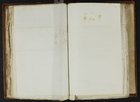
Drawing of plan for Queens Wharf road, courtesy of Public Record Office Victoria, Victorian Archives Centre.
Details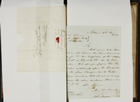
Joint letter to Public Works Committee from David Byrne, John Brown, et al, 18 June 1844, courtesy of Public Record Office Victoria, Victorian Archives Centre.
Details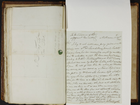
Letter to Assessment Committee from J Ballingall, 16 April 1844, courtesy of Public Record Office Victoria, Victorian Archives Centre.
Details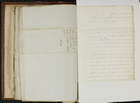
Letter to Assessment Committee from J Taylor, 23 February 1844, courtesy of Public Record Office Victoria, Victorian Archives Centre.
Details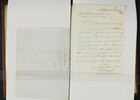
Letter to Chairman of Finance Committee from J Ballingall, 5 March 1844, courtesy of Public Record Office Victoria, Victorian Archives Centre.
Details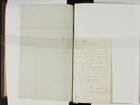
Letter to Chairman of Market Committee from Charles Vaughan, 31 October 1843, courtesy of Public Record Office Victoria, Victorian Archives Centre.
Details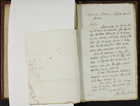
Letter to Committee of Public Works from Henry Moor, 30 January 1844, courtesy of Public Record Office Victoria, Victorian Archives Centre.
Details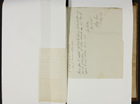
Letter to Committee of Public Works from Henry Moor, 3 May 1844, courtesy of Public Record Office Victoria, Victorian Archives Centre.
Details
Melbourne Cricket Ground
The 'mecca' of Australian sport, the Melbourne Cricket Ground (MCG) is the most revered stadium in the country. It is perhaps best known as the setting for the first Test cricket match, as well as being the place where Australian Rules football was born and raised. After Melbourne's foundation, land in the vicinity became an agistment area for horses belonging to colonial troopers. Melbourne Cricket Club (MCC) moved to the site, its third base, in 1853.
The first cricket match at the ground, an intercolonial encounter between New South Wales and Victoria, took place in 1862. This was closely followed by the first 'international' match, between an English team (Stephenson's Eleven) and Victoria. The first Test match, between Australia and England, was held on the MCG in 1877. Since that time, cricket has served as a major attraction at the MCG, with 350 534 attending the Third Test against England in 1936-37, and the final of the 1992 World Cup Cricket tournament being played there.
Meanwhile, the game of Australian Football was developing on the park outside the MCG. The first match is generally acknowledged as having taken place in August 1858. The Melbourne Football Club was formed in that year, with major input from Melbourne Cricket Club identities such as Thomas Wentworth Wills and his cousin, Henry Harrison, who also played a prominent part in formalising and writing up the first set of rules a year later. While there is evidence that Melbourne Football Club actually played matches on the MCG in the first couple of years of its existence, the most significant match took place in 1869, after which time the game became a regular part of the MCG's fixture. Before this time, concern that the ground might be adversely affected for cricket matches largely kept football off the MCG.
'Aussie Rules' dominates the ground during the winter, and an agreement between the MCC and the Australian Football League (AFL) ensures that there is a minimum of 45 AFL games played at the ground every season, while the ultimate game of the season, the Grand Final, is played at the MCG until at least the year 2030. Since the completion of the Great Southern Stand in 1992, the AFL headquarters have been based in the new stand.
While cricket and football are the main attractions at the MCG, many other sports have also been conducted there, including baseball, bicycle races, soccer, lacrosse, tennis, Gaelic football and athletics. Over its history, the MCG has been the focus of many of the city's noteworthy events. In 1956 it was the main stadium for the Olympic Games, and it has also hosted numerous concerts, papal and royal visits. During World War II the tunnels beneath the stands served as a rather chilly home for American Marines retreating from the Guadalcanal conflict, and later as a personnel depot and transit camp for members of the Royal Australian Air Force.
In 1982 the first colour electronic scoreboard was installed, followed in 1985 by the installation of floodlights, making night football and day-night cricket a new feature of the ground's events. A five-stage redevelopment of the northern side of the MCG - around 55% of the ground - commenced in 2001 for completion by the 2006 Commonwealth Games, and included demolition of part of the old stadium from the southern end of the Ponsford Stand to the eastern end of the Olympic Stand, with a final capacity of 100 000, 80% under cover. The old stands were as much a feature of the ground as the events held on the arena. On one side were the Long Room and Members' Pavilion, completed in 1927 and holding the MCC Museum and the Australian Gallery of Sport and Olympic Museum, while opposite towered the Great Southern Stand. The two were linked by the Olympic Stand and the Ponsford Stand. The Long Room and the Ponsford name were both re-established in the new development. The ground is situated just a short walk from the centre of the city, and it is an integral part of Melbourne's leisure calendar, as well as providing a major focal point and landmark for tourists and local residents alike.
- References
- Dunstan, Keith, The people's ground: the MCG, Australian Scholarly Publishing, Melbourne, 2000. Details
